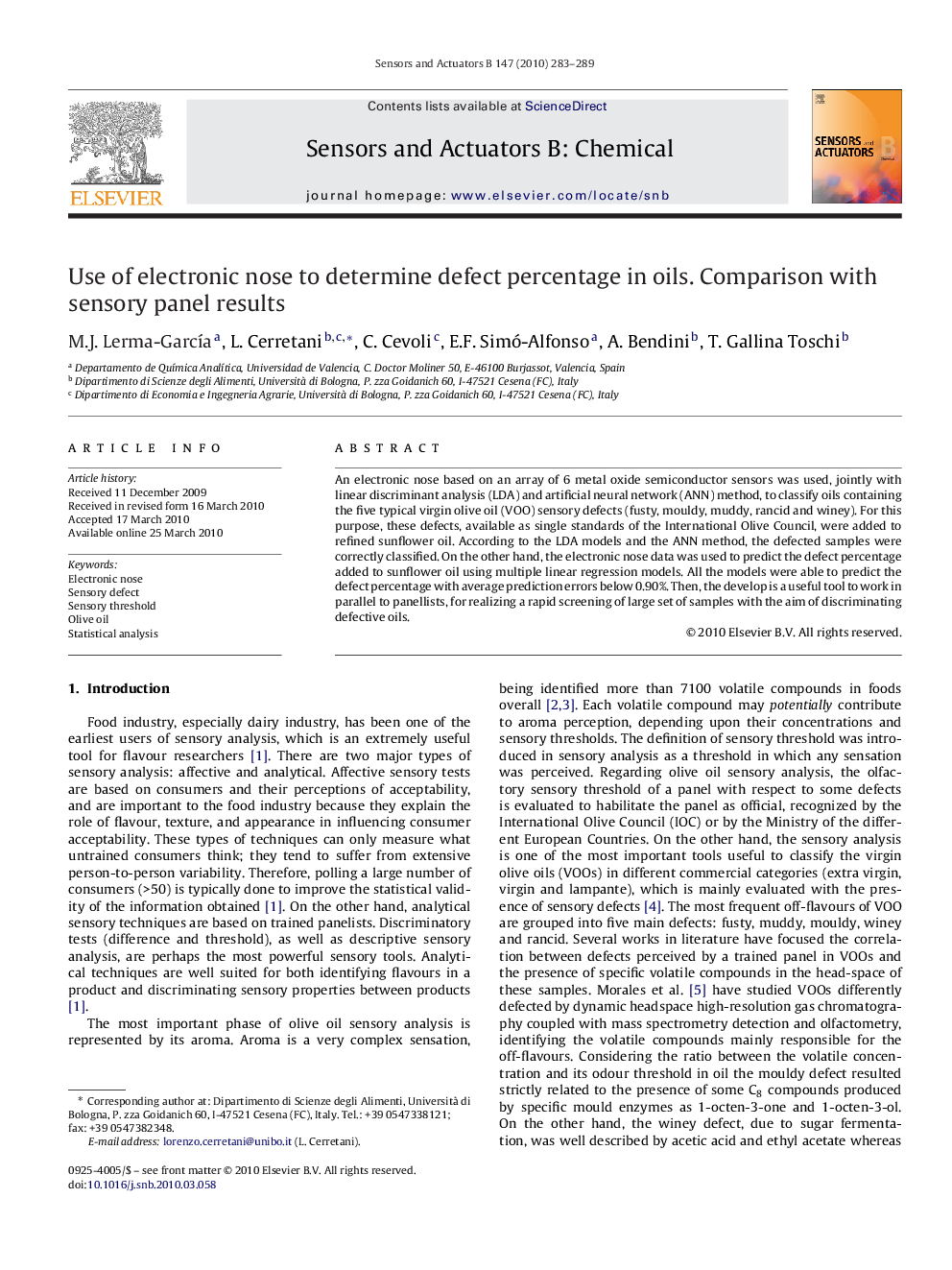| Article ID | Journal | Published Year | Pages | File Type |
|---|---|---|---|---|
| 741044 | Sensors and Actuators B: Chemical | 2010 | 7 Pages |
An electronic nose based on an array of 6 metal oxide semiconductor sensors was used, jointly with linear discriminant analysis (LDA) and artificial neural network (ANN) method, to classify oils containing the five typical virgin olive oil (VOO) sensory defects (fusty, mouldy, muddy, rancid and winey). For this purpose, these defects, available as single standards of the International Olive Council, were added to refined sunflower oil. According to the LDA models and the ANN method, the defected samples were correctly classified. On the other hand, the electronic nose data was used to predict the defect percentage added to sunflower oil using multiple linear regression models. All the models were able to predict the defect percentage with average prediction errors below 0.90%. Then, the develop is a useful tool to work in parallel to panellists, for realizing a rapid screening of large set of samples with the aim of discriminating defective oils.
